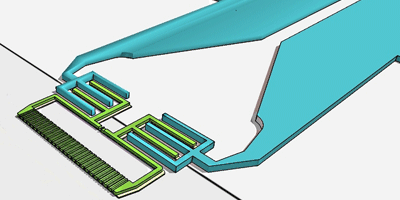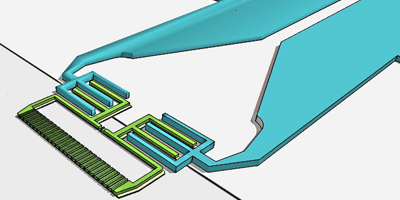Setting Ground Rules for Quantum Circuits
Electrical engineers can design complex circuits using simple formulas that describe, for example, how two resistors add together when connected in series. But a similar set of rules (or practical tools) remain elusive for quantum circuits built with superconducting elements. A new theoretical work in Physical Review X uses a simplification related to the symmetry of the device to calculate the electronic energy levels in a previously studied circuit. This approach could guide the development of more complex quantum circuits in the future.
A typical quantum superconducting circuit uses Josephson junctions to control the flow of superconducting electrons. A Josephson junction (JJ) consists of a thin barrier of nonsuperconducting material sandwiched between two superconductors. For a single JJ, physicists can calculate, for example, the rate at which electrons tunnel from one side to the other, but predictions are harder to make when large numbers of JJs are connected together.
David Ferguson of Northwestern University in Evanston, Illinois, and his colleagues have described the energy levels in a particular quantum circuit, called a fluxonium device. This “artificial atom” is made of 40 or more JJs connected in a linear array, with the two ends connected through a relatively weak JJ. The potential energy difference due to tunneling across each junction is described by a unique superconducting phase. Assuming that the array JJs are perfectly identical, the equation describing the energy in the system is unchanged by rearranging the order of these phases. The researchers use this “permutation symmetry” to first calculate the lowest energy excitations. They then derive the energy corrections from perturbations, such as manufacturing imperfections or stray capacitance, that will distinguish one JJ from the others. – Michael Schirber





